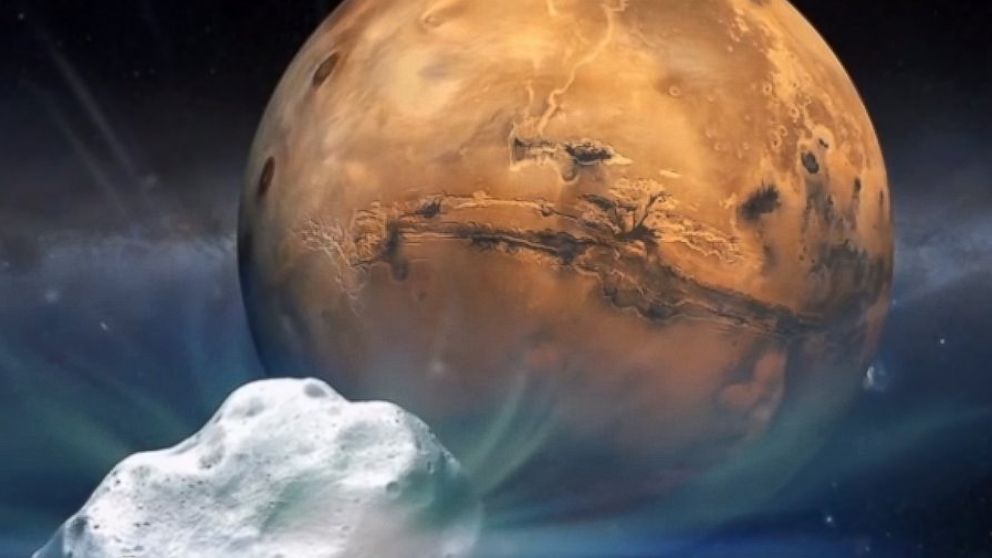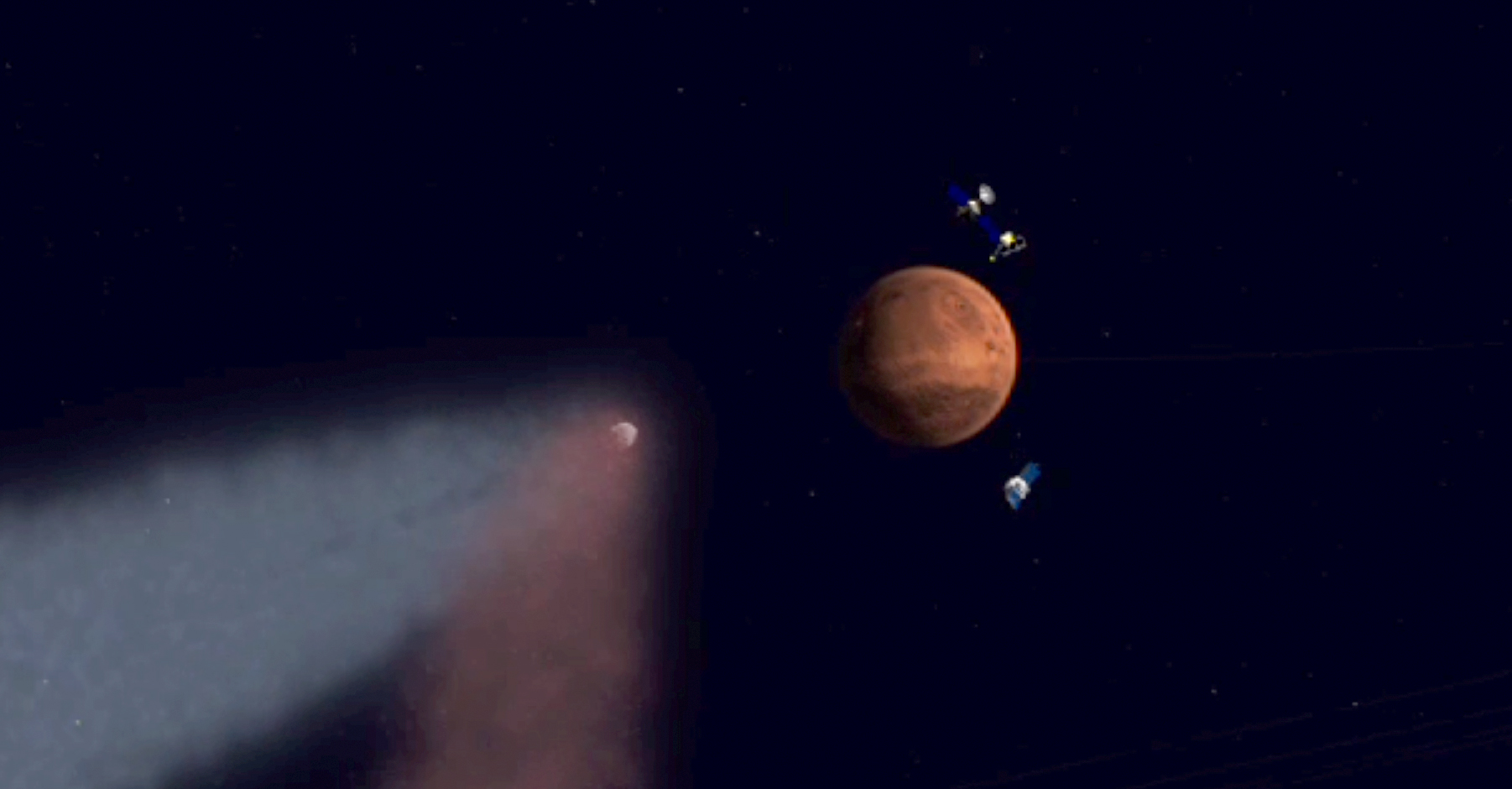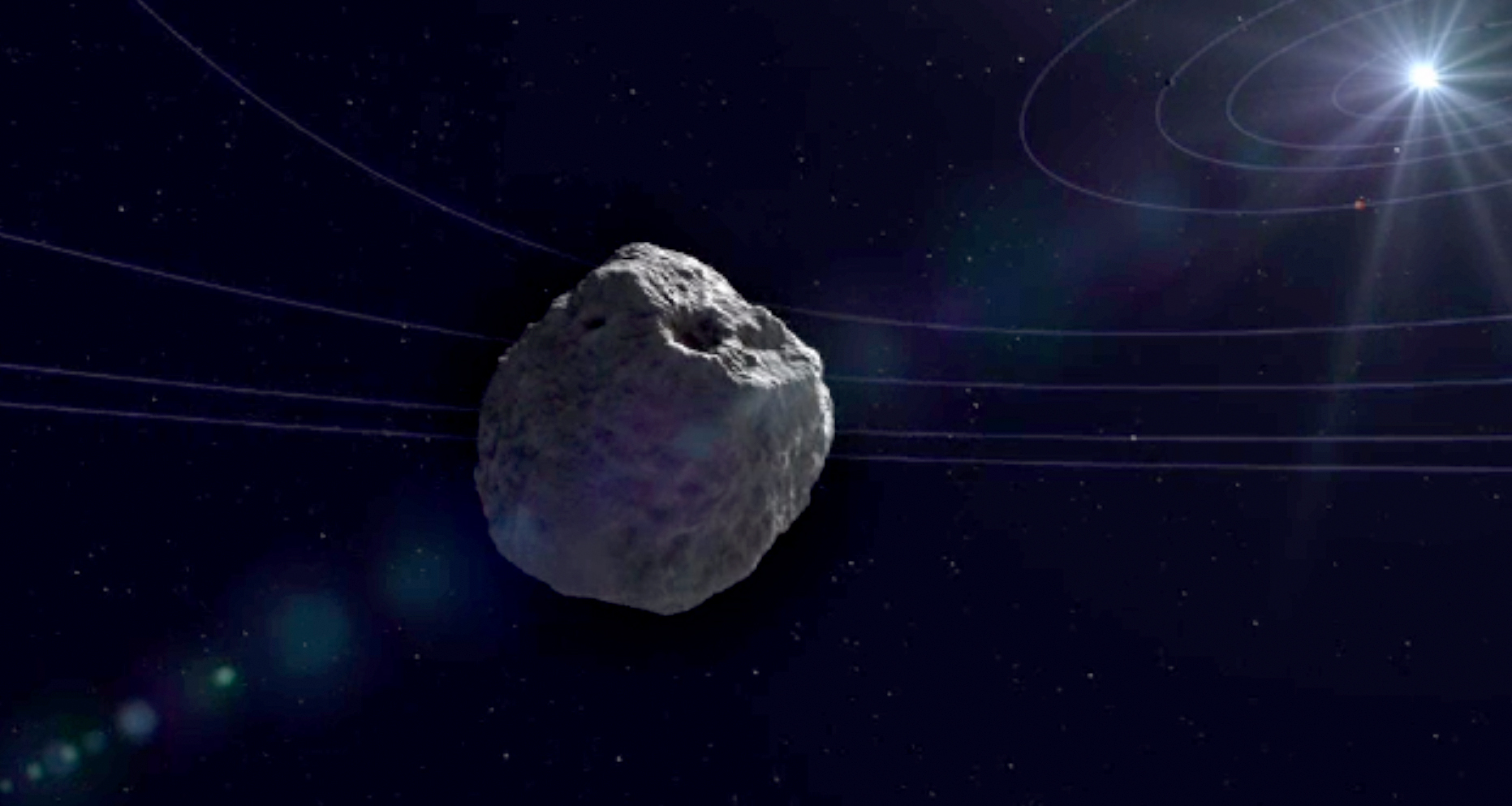Comet Siding Spring to Skim Past Mars in Once in a Million Years Encounter This Weekend
Comet Siding Spring on course for a once in a million years cosmic event.

— -- A once in a million years cosmic event will grace the heavens this weekend when a comet is expected to have a close encounter with Mars.
Comet Siding Spring will pass within 87,000 miles of the Red Planet on Sunday, Oct. 19 -- that's about one-third the distance between the Earth and the moon, according to NASA scientists.
The comet is expected to come closest to Mars at 2:27 p.m. ET that day, moving at about 34 miles per second.

The best view of the rare show can be viewed via binoculars or telescope from the Southern Hemisphere, with South Africa and Australia having the best views as the comet grazes past Mars, scientists said.
The rest of the world can look forward to incredible images captured by NASA's fleet of spacecraft, which have taken up prime positions to capture images, and information about the size, rotation and gas composition of Siding Spring, agency officials said.
John Grunsfeld, astronaut and associate administrator for NASA's Science Mission Directorate, called the event a "cosmic science gift that could potentially keep on giving."

The comet is comprised of icy debris that researchers believe are remnants from the formation of the solar system. Its dramatic brush past the Red Planet is expected to yield new insights into the materials that existed during the formation of the solar system 4.6 billion years ago.



